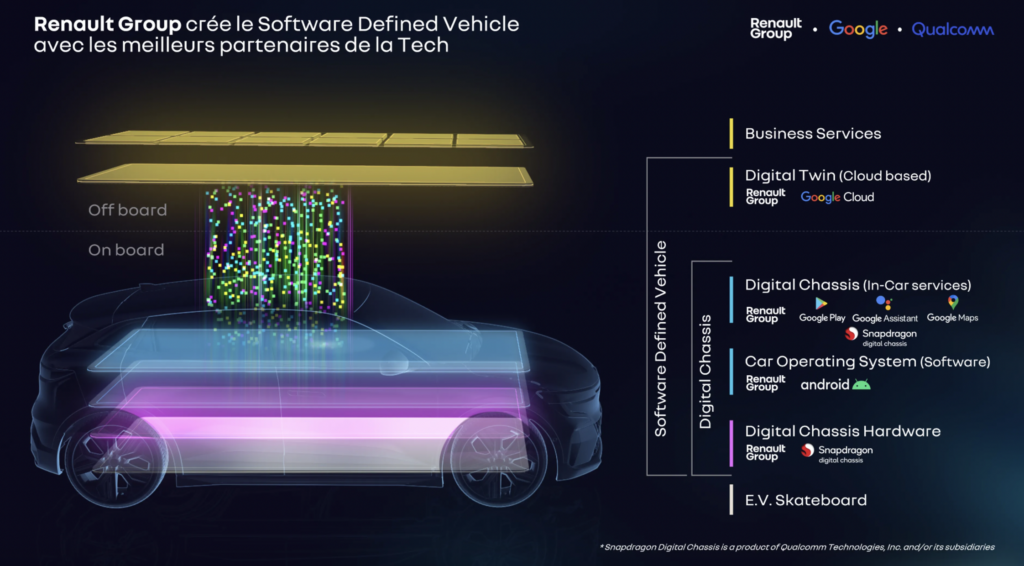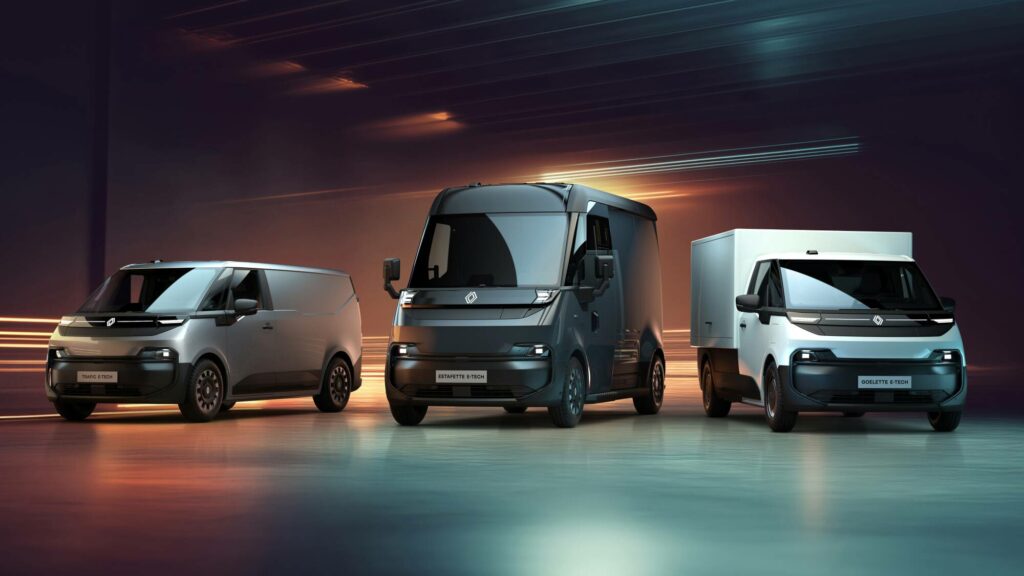Renault is preparing for the era of software-defined mobility, which promises a step change in user experience, road safety and business models. By 2030, the automaker expects software to account for roughly 40% of a vehicle’s value. Its Ampere division was set up in 2023 specifically to prepare for the new era of intelligent electric vehicles (EVs), with software at the heart of this evolution.
“The software-defined vehicle (SDV) is transforming the way we build the E/E architecture for smart vehicles,” says Antoine Vuillaume, Ampere’s SDV Programme Director. “It is a revolutionary disruption, both for the E/E architecture and the software on top of it. Today a car can have 100 million lines of code; the complexity is nothing like what we had in the past.” That demands a fresh approach to vehicle design.
A new design approach
Automakers have historically designed vehicles around a chassis and an engine or electric powertrain, and then added the electronic features required for specific functions. However, this makes it difficult to integrate new features later on and relies on numerous ECUs and hundreds of metres of wiring. Ampere’s SDV strategy introduces a single platform with centralised software architecture and a connected, intelligent operating system.
“Industry players have really struggled with the historic, distributed architectural approach,” Vuillaume tells Automotive World. “We were spending more than 70% of our time redeveloping without bringing new value. At the same time, the development cycles are shrinking; we need to develop faster to cope with the market transformation.”
Over-the-air updates (OTA) are central to this new architectural approach, and they need to be both fast and easy. Not only do they allow for remote fixes and new features, OTA updates fundamentally rewrite the vehicle’s value proposition. “Updateability transforms the vehicle from a fire-and-forget product to a living product,” he asserts. “If there’s one key element in SDV, this is it.”
Renault envisions users upgrading their vehicle just as they would their phone, adding new functions as needed. Tapping into vehicle data, automakers or third parties could offer targeted, personalised features based on historic use patterns and driving habits. With the high power computing and intelligence made possible with SDVs, predictive maintenance could offer even more precise insights. For instance, fleets could track the wear and tear of parts in real time.
Saving weight is another important feature of an ideal SDV E/E architecture, with the promise of much less wiring. Renault claims it can shed up to 9kg, which supports better energy management, particularly in EVs. “Weight savings and energy optimisation are often overlooked, but they are a key driver for us,” Vuillaume notes.

LCVs lead the way
The SDV evolution is well underway, but progress will vary by automaker and segment. Tesla, Lucid, Rivian and Nio lead the SDV Rankings compiled by Wards Intelligence, but Ampere’s work suggests Renault could soon make its way up the chart. Notably, the automaker is focussing its initial SDV efforts on the light commercial vehicle (LCV) segment. “LCVs are a very good match for the capabilities offered by SDV and could see the biggest impact to the business case,” he explains. “There’s an investment involved in the transformation to SDVs, and LCV owners can turn that into a business advantage.”
In last-mile delivery, where every second counts, optimising efficiency features, energy management and predictive maintenance will play out directly on the bottom line. Commercial vehicles also have lengthy lifetimes, spending a decade or more on the road. The ability to keep the user experience fresh over such a long time becomes a real asset.
Renault’s Trafic, Estafette and Goelette electric models will be the first to use the SDV architecture developed by Ampere. Prototypes are expected to begin road trials in summer 2025, with a market launch planned for 2026.

Where next?
Today, Ampere has 1,800 engineers helping to realise a software-defined future, and LCVs are just the first step. Its in-house developed operating system, CAR OS, will be offered to other automakers in the hopes of serving as a new industry standard. “If our SDV OS makes its way into more than 15% of the market, then it’s a winner,” says Vuillaume. “The market never has dozens of OS; generally three or four survive. Most of the time, it’s the ones that are the most open.”
Part of what makes a good E/E architecture is that it can attract new developers. “The SDV transformation is about going from a few thousand automotive developers to a vast community that stretches far beyond. That’s what we want to do with the Android community, with millions of developers able to bring value in every aspect.”
Renault has worked closely with Google on its SDV digital architecture, building on the existing Android Automotive OS and Google Cloud technology. It also collaborates with Qualcomm, incorporating its ubiquitous Snapdragon Digital Chassis. Vuillaume suggests that such partnerships with segment leaders are fundamental to its SDV goals: “We have been developing our OS with key technology players, because we believe in the importance of an open architecture for the global ecosystem; this cannot be designed simply for an OEM-defined and contained world. We want this technology open to all developers, not just those at Ampere. Our team is doing its best to achieve that, and in the end, we think this will transform mobility.”
